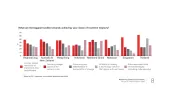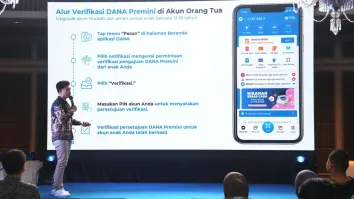
The power of analytics on the financial industry
By Andrew PitcherThe impact the global financial crisis had on financial services has been well documented; however one of the most interesting insights it revealed, was the power of analytics on the industry. When you look at the companies that have emerged the strongest from the crisis, they owe a great deal to the astute use of real-time predictive analytics. These firms had the systems and organizational structures to capture and act upon early warning signals, monitor a changing environment and adjust responses accordingly. They not only understood what happened in the past, but what it meant, and what they needed to do next.
In an increasingly globally competitive environment, analytics will be pivotal to competitive success as global demands and compliance across risk, regulatory and performance management explode in complexity. More and stricter regulations promise to add costs through new fees and capital requirements, and may restrict economies of scale in attempting to tackle the “too big to fail” issue.
The changed environment will force financial institutions to do more with less. Those that prosper will be the ones that have the analytic horsepower to understand which customers and which products deliver the best risk-adjusted return, establish mastery over liquidity positions and risk exposures and have the predictive wherewithal to make rapid and effective adjustments to minimize loss and maximize opportunities for competitive advantage.
After years of collecting vast quantities of data, financial services institutions must now apply the most up-to-date analytical methods to understand that data accurately, anticipate future needs and achieve high-performance business outcomes. In essence, they must move from merely descriptive analytics (the “what”) to the predictive (the “so what”), which can drive organizations to be more prescriptive (the “what now”), breaking down silos and connecting forward-looking analytics to their operations.
The analytical imperative
Most of a bank’s potential profitable growth is locked within low-value segments that represent 90 percent of the customer base. In fact, experience shows that half of profitable revenue derived from fewer than 10 percent of customers. Especially now, with capital and regulatory constraints demanding optimum performance, banks can find a massive opportunity in customer value migration.
Consider the advantages of modelling segments and subsegments of clients in terms of lifecycle, values, trends and needs—or being able to tap into social networking and other behavioural characteristics. Analytics can make it possible for banks to optimize for revenue. One institution achieved 12 percent incremental revenue generation with no additional marketing expenditure. Another lowered marketing costs by 25 percent while increasing revenue by 4 percent; still another improved cross-selling by almost 40 percent.
In Italy, two leading banks have developed loan and management programs based on analytics, and a portfolio management analytics portal to allow client default monitoring. The result: a 3 to 4 percent reduction in defaults and 100 to 200 basis point reduction in foreclosure rates. Considering that the
industry-wide expectation for mortgage defaults is $1.1 trillion, leading to $141 billion in expected foreclosure costs across the industry, the ability to minimize the damage by effective analytics will differentiate banks as creators of shareholder value.
Financial services can learn from other industries as well. PosteMobile, one of Italy’s leading providers in the mobile communication market, is working with Accenture and HP to manage and prevent fraud through analytics. Paola Painelli, fraud manager at PosteMobile, says, “We now have real-time monitoring and predictive analytics solutions that enable us to respond quickly to unusual behavior, either from the network or from our dealers, which dramatically improves our business performance and makes us more competitive.”
Out with the old
Many firms remain burdened with a legacy approach to analytics. Among the issues they need to address are:
• Analytical capabilities in business silos, often using different and incompatible technologies
• Inconsistent data, with different definitions, taxonomy, levels of granularity and refresh rates
• A focus on descriptive rather than predictive analytics
To elaborate, descriptive analytics is traditional and technical, rooted in data, software systems and infrastructure. The analytics generated here take the form of reporting on and providing access to information about any part of the business. Descriptive analytics identifies historical problems, how, where and under what circumstances they occurred, and can even point to action that might resolve them. Good, but not good enough for the reconfigured financial industry of the future.
Predictive analytics, by contrast, answers the question, “so what?” It requires the outputs of descriptive analytics but goes far beyond them, adding an additional layer of insight to the information provided by synthesizing and supersizing those outputs for action. Sophisticated algorithms and statistics are applied to manipulate the data into management tools that can help executives make better, more informed decisions. Predictive analytics is less transactional and more strategic. It tells managers what happened, why it happened and what will happen next.
Applying predictive analytics enables companies to be more prescriptive, integrating the history of descriptive analytics and the insight of predictive analytics to offer norms for action that can optimize high performance.
Three models to consider
Accenture proposes three methodologies to implement and govern analytics across the financial services enterprise, with three core organizational models:
Distributed Model—applicable when structures are complex and reporting and analytical capabilities immature, with data used as a tool to build business but not yet leveraged as a competitive advantage. This model keeps business analysts close to the business, with multiple processors, databases, applications and spreadsheets, and distributed business reporting and analytics teams.
Center of Excellence Model—applicable in moderately complex business structures with maturing reporting and analytics capabilities where data is viewed as a competitive advantage. The business is responsible for performance measurement, reporting and analytics. The center of excellence provides standardized governance, recruiting, career management and other functions, and also manages the interface with IT.
Consolidated Model—applicable in straightforward business structures with mature reporting and analytics capabilities, where the predominant use of data is compliance. A central unit governs reporting structures, reference data and quality control. The business is responsible for analyzing results with the central corporate organization. Standard reports are centrally produced.
Whatever the model, companies must focus on the following three “to-dos”: targeting the high-value areas in terms of identifying new and different needs and opportunities; aligning their operating model to engage business, IT and analytic disciplines across the enterprise; and defining the right execution strategy to deploy resources given capital constraints, the need to integrate across traditional lines, the evolution of
cloud computing models and analytics as a service offering.
Andrew Pitcher, Asia Pacific Banking Managing Director, Accenture




















 Advertise
Advertise








